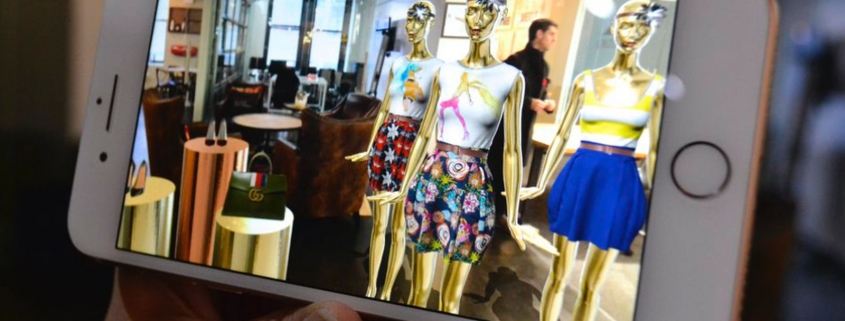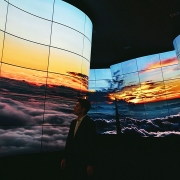XR: The Next Connected Age of Personalization
Written by Keith Soljacich, VP/Group Director Experiential Technology at Digitas
CES 2019 marks the end of a decade packed with technology innovation that has brought change to our everyday lives both good and bad. In these 10 years, the way marketers reach consumers has fundamentally changed, both in approach and form factor. At the beginning of the decade e-commerce was a channel, now it is THE channel. 10 years ago, smartphones were simply a mobile communication device, now they are THE way we all communicate, play and shop. But as we move in to the 20’s, innovation in smartphone technology has slowed, and the capabilities of consuming content on a 2D screen has peaked. As we look ahead to the next era of computing, it will be XR, or extended reality, delivering the next generation of brand experience.
XR, a term to encompass AR, VR and MR (Mixed Reality), is fundamentally changing the way we view the world around us. On one end of the scale, VR allows us to immerse ourselves in a completely digital world of imagination. At the other end of the scale, AR blends virtual objects with the (real) world around us. This real-time combination of physical and digital gives marketers the ability to deliver a personalized experience like never before.
The Consumer Demand for XR
Over the last few years, XR has been (at best) an experiment for brands to try out a new medium and (at worst) a gimmick to exploit curiosity. But awareness around the utility of the technology has shifted the demand. A recent study by PC Magazine and Statista found that consumers want XR experiences tied to shopping.
- 61% of consumers want to visualize an outfit before they buy it.
- 67% of consumers want to learn more about a place they are visiting.
- 54% want to visualize large items like furniture before they buy it.
- 58% of consumers want to learn new skills or techniques using XR.
This insight opens the door for marketers to explore ways their customers experience their product before, during and after a purchase. Consumers are increasingly looking for XR to help inform their purchasing decisions, and the brands that offer an XR experience to enhance shopping will have an edge over competitors.
Data Powers the AR Cloud
The Internet fundamentally changed humans’ ability to acquire knowledge. In an instant I can type a term into a browser’s search engine and find algorithm-based results both paid and organic. To do so I need to combine the power of the web with the power of my mind. If I see something I want to learn about, I take a mental snapshot and translate that “thing” into a series of keywords that I type into a browser. Brands that advertise will assist consumers with that translation by combining a product with relevant information nearby. This tried and true approach to search is changing through the use of XR.
Key to this change is the AR Cloud. The AR Cloud is a digital copy of the real world meant to enable sharing of AR experiences across multiple users and devices. Not only can marketers enable experiences based on where you are in 2D space, but where you are in 3D space, effectively creating the search engine of AR. Point your smartphone camera (or soon your smart glasses) at any object or place and instantly retrieve a personalized experience right where you are. Consumers can see a marketing message in-store, a 3D spatial experience that shows them top-use cases, product information, and an owner experience like a virtualized installation guide. Same object, different contextualized experiences.
Scale Closes the Deal
In 2018, we crossed the threshold for connectivity and access when it comes to immersive experiences in XR. Now over 1 billion devices globally are able to access XR content through smartphones, and in 2020 it will grow to almost 3 billion. 2019 brings us the first 5G connected devices that are ideal for always-on and super-fast access to information and in turn, AR Cloud-connected immersive experiences.
Start Now
Brands can take the first steps to enable XR advertising today. Begin by digitizing your products in 3D so they are ready to be identified by their 3D shape through image recognition or displayed virtually on-demand. Next, find outlets to tell your brand story in XR by experimenting with a virtual “try-on” campaign through AR ads that let you put the car in your driveway, the watch on your wrist or open a portal to your next family vacation, all via the smartphone. And once the 20’s are actually here, your brand will be ready for the next screen-less connected age.
Photo Source: Ben Fox Rubin/CNET








Leave a Reply
Want to join the discussion?Feel free to contribute!